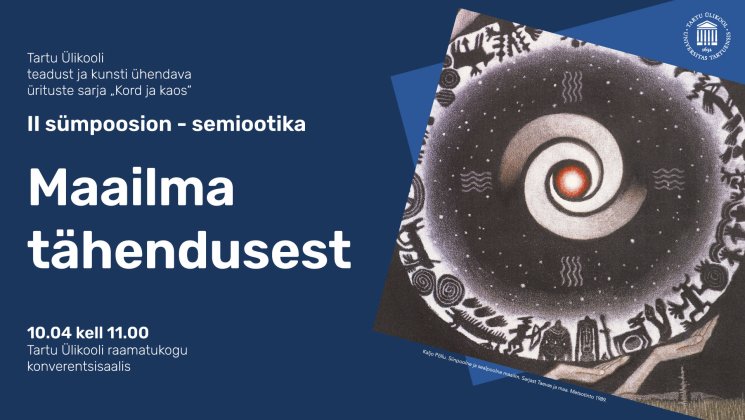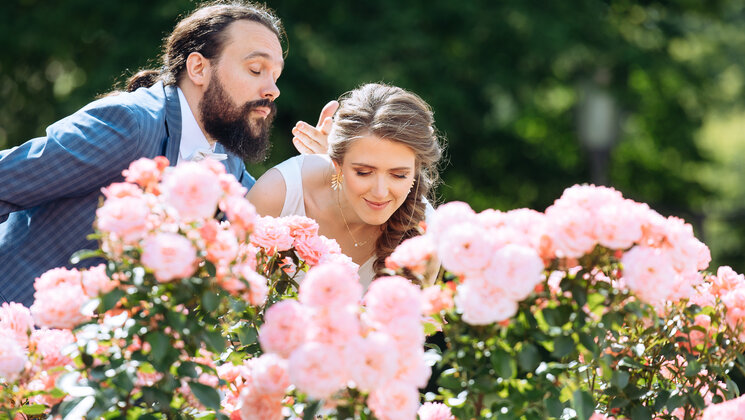-
Humanitaarteaduste ja kunstide valdkondHumanitaarteaduste ja kunstide valdkonna dekanaatJakobi 2, r 116-121 51005 Tartu linn, Tartu linn, Tartumaa EST0Ajaloo ja arheoloogia instituutJakobi 2 51005 Tartu linn, Tartu linn, Tartumaa EST0Eesti ja üldkeeleteaduse instituutJakobi 2, IV korrus 51005 Tartu linn, Tartu linn, Tartumaa ESTFilosoofia ja semiootika instituutJakobi 2, III korrus, ruumid 302-337 51005 Tartu linn, Tartu linn, Tartumaa EST0Kultuuriteaduste instituutÜlikooli 16 51003 Tartu linn, Tartu linn, Tartumaa EST0Maailma keelte ja kultuuride instituutLossi 3 51003 Tartu linn, Tartu linn, Tartumaa EST0UsuteaduskondÜlikooli 18 50090 Tartu linn, Tartu linn, Tartumaa EST0Viljandi kultuuriakadeemiaPosti 1 71004 Viljandi linn, Viljandimaa EST0Humanitaarteaduste ja kunstide valdkonna emeriitprofessorid0Humanitaarteaduste ja kunstide valdkonna emeriitdotsendid0Sotsiaalteaduste valdkondSotsiaalteaduste valdkonna dekanaatLossi 36 51003 Tartu linn, Tartu linn, Tartumaa EST0Haridusteaduste instituutJakobi 5 51005 Tartu linn, Tartu linn, Tartumaa EST0Johan Skytte poliitikauuringute instituutLossi 36, ruum 301 51003 Tartu linn, Tartu linn, Tartumaa EST0MajandusteaduskondNarva mnt 18 51009 Tartu linn, Tartu linn, Tartumaa EST0Psühholoogia instituutNäituse 2 50409 Tartu linn, Tartu linn, Tartumaa EST0ÕigusteaduskondNäituse 20 - 324 50409 Tartu linn, Tartu linn, Tartumaa EST0Ühiskonnateaduste instituutLossi 36 51003 Tartu linn, Tartu linn, Tartumaa EST0Narva kolledžRaekoja plats 2 20307 Narva linn, Ida-Virumaa EST0Pärnu kolledžRingi 35 80012 Pärnu linn, Pärnu linn, Pärnumaa EST0Sotsiaalteaduste valdkonna emeriitprofessorid0Sotsiaalteaduste valdkonna emeriitdotsendid0Meditsiiniteaduste valdkondMeditsiiniteaduste valdkonna dekanaatRavila 19 50411 Tartu linn, Tartu linn, Tartumaa ESTBio- ja siirdemeditsiini instituutBiomeedikum, Ravila 19 50411 Tartu linn, Tartu linn, Tartumaa ESTFarmaatsia instituutNooruse 1 50411 Tartu linn, Tartu linn, Tartumaa ESTHambaarstiteaduse instituutL. Puusepa 1a 50406 Tartu linn, Tartu linn, Tartumaa ESTKliinilise meditsiini instituutL. Puusepa 8 50406 Tartu linn, Tartu linn, Tartumaa ESTPeremeditsiini ja rahvatervishoiu instituutRavila 19 50411 Tartu linn, Tartu linn, Tartumaa ESTSporditeaduste ja füsioteraapia instituutUjula 4 51008 Tartu linn, Tartu linn, Tartumaa ESTMeditsiiniteaduste valdkonna emeriitprofessorid0Meditsiiniteaduste valdkonna emeriitdotsendid0Loodus- ja täppisteaduste valdkondLoodus- ja täppisteaduste valdkonna dekanaatVanemuise 46 - 208 51003 Tartu linn, Tartu linn, Tartumaa ESTArvutiteaduse instituutNarva mnt 18 51009 Tartu linn, Tartu linn, Tartumaa ESTGenoomika instituutRiia 23b/2 51010 Tartu linn, Tartu linn, Tartumaa ESTEesti mereinstituutMäealuse 14 12618 Tallinn, Harjumaa EST0Füüsika instituutKeemia instituutRavila 14a 50411 Tartu linn, Tartu linn, Tartumaa ESTMatemaatika ja statistika instituutNarva mnt 18 51009 Tartu linn, Tartu linn, Tartumaa EST0Molekulaar- ja rakubioloogia instituutRiia 23, 23b - 134 51010 Tartu linn, Tartu linn, Tartumaa ESTTartu observatooriumObservatooriumi 1 61602 Tõravere alevik, Nõo vald, Tartumaa EST0TehnoloogiainstituutNooruse 1 50411 Tartu linn, Tartu linn, Tartumaa ESTÖkoloogia ja maateaduste instituutJ. Liivi tn 2 50409 Tartu linn, Tartu linn, Tartumaa ESTLoodus- ja täppisteaduste valdkonna emeriitprofessorid0Loodus- ja täppisteaduste valdkonna emeriitdotsendid0Akadeemilise sekretäri tegevusvaldkondPersonaliosakondÜlikooli 18, ruumid 302 ja 304 50090 Tartu linn, Tartu linn, Tartumaa EST0Finantsjuhi tegevusvaldkondRahandusosakondJakobi 4 51005 Tartu linn, Tartu linn, Tartumaa EST0Kantsleri tegevusvaldkondInfotehnoloogia osakondUppsala 10 51003 Tartu linn, Tartu linn, Tartumaa EST0KantseleiÜlikooli 17 (III korrus) 51005 Tartu linn, Tartu linn, Tartumaa EST0Kinnisvaraosakond0Turundus- ja kommunikatsiooniosakondÜlikooli 18, ruumid 102, 104, 209, 210 50090 Tartu linn, Tartu linn, Tartumaa EST0Õppeprorektori tegevusvaldkondÕppeosakondTeaduskoolUppsala 10 51003 Tartu linn, Tartu linn, Tartumaa ESTÜliõpilaskonna bürooÜlikooli 18b 51005 Tartu linn, Tartu linn, Tartumaa EST0Õppimis- ja õpetamiskeskusLossi 36-401 51003 Tartu linn, Tartu linn, Tartumaa ESTTeadusprorektori tegevusvaldkondRaamatukoguW. Struve 1 50091 Tartu linn, Tartu linn, Tartumaa ESTGrandikeskusRaekoja plats 9, III korrus 51004 Tartu linn, Tartu linn, Tartumaa ESTArendusprorektori tegevusvaldkondEttevõtlus- ja innovatsioonikeskusNarva mnt 18 51009 Tartu linn, Tartu linn, Tartumaa EST0Loodusmuuseum ja botaanikaaedVanemuise 46 51003 Tartu linn, Tartu linn, Tartumaa EST0Rahvusvahelise koostöö ja protokolli osakond0MuuseumLossi 25 51003 Tartu linn, Tartu linn, Tartumaa EST0Rektori tegevusvaldkondRektoraadi bürooÜlikooli 18 50090 Tartu linn, Tartu linn, Tartumaa ESTSiseauditi büroo
Before the Curtain is Raised
17.02.-17.04.2022
Jakobi 2 main hall, Tartu
Exhibition of student works of University of Tartu Viljandi Culture Academy
The performance starts at seven o’clock. For the next two and a half hours, the actors on the stage take the audience along to a journey that leaves them richer than they were before. The stage is deconstructed again, the bits and pieces put to a warehouse to wait for the next performance. The cables are wrapped, the props are stored on shelves. The make-up from the actors’ faces travels to the trash on cotton pads, the wigs are hung on the wall, the costumes end their day in a washing machine. The stage is empty again and ready for the next magical journey that is being prepared months, sometimes years in advance. How is this miracle born? Those of us who enter the theatre through the cloakroom don’t know that much about the ones working behind the stage. There are people in the theatre who know whether to be, or not to be. But there are also people who know how to erect a wall without nails. How to smash a glass to bits without hurting anyone. How to turn the visible into invisible, the heavy into light, the fragile into bulletproof. Gravitation, thermodynamics and other common laws of physics are ignored in the theatre, at the speed of light, if necessary. Because the performance starts at seven o’clock.
There are dozens of people of different occupations in every theatre who all work hard for the audience to enjoy the performance. Four of those occupations are taught in the Viljandi Culture Academy, where the creative-technical theatre specialities have been taught since 1991. Currently, the University of Tartu Viljandi Culture Academy offers a joint performing arts curriculum that includes among others the four “backstage” specialities: decoration and props, lighting design, video design and technical producer. The alumni of this curriculum are professionally active in both the biggest theatres and the smallest projects.
The works presented in this exhibition were prepared during different practical courses, mainly by the decoration and prop speciality students but also by the future technical producers. They were supervised by professionals with extensive experience from different Estonian theatres – and also the alumni of the same curriculum.
Supervised by Terje Kiho, the artist and prop maker of Theatre Vanemuine, the students created devil and fantasy masks, learning to use the papier-mâché technique that enables them to create lightweight and durable items with paper, textile and glue.
The puppet making course introduces the students to the technical aspects of creating a theatre puppets. The puppets’ heads are made in papier-mâché technique, the bodies use different materials like textile and wire. The course was supervised by Annika Aedma, the master puppeteer of Noorsooteater.
For the imitation compositions, the task was to combine at least four different materials. Graining and marbling were compulsory for all works, since these techniques are used the most in theatre decorations. The other materials chosen by the students themselves include rust metal, tire tread, mushroom gills, burnt fabric, fish scales, grain filler, stone wall, cloudy sky, brick wall, snake scales, cracked isomalt, wrinkled fabric, human iris. The imitation course was supervised by Eve Komissarov, the artist-decorator of Ugala Theatre.
The authors of these works are students of the decoration and prop speciality Emilie Kirsi, Triin Närep, Susanna Liisa Mildeberg, Ksenia Yakovleva, Annika Mänd, Berta Kelder, Birgit Potter, Carol Põldsaar, Lysette Tint, Rebecca Villem, Kerli Kore, Madli Liiva, Mailiis Laur, Külli Tamjärv, Eero Ehala, Merilin Sillastu, Kaisa Ekbaum, Ida Lepparu, Kristi Kalmus, Ülle Saluvere, Liis Künnapas, Mirjam Kalamees, Aveli Tiiter, Doris Toom, Liis Säde, Tuuli Omler and the students of the technical producer speciality Loreta Janson, Mauri Liiv, Karoliina Kangur, Anna-Maria Pink.
The exhibition was put together and designed by Eve Komissarov and Eero Ehala.

Sarja „Kord ja kaos“ teisel sümpoosionil keskenduti semiootikale


